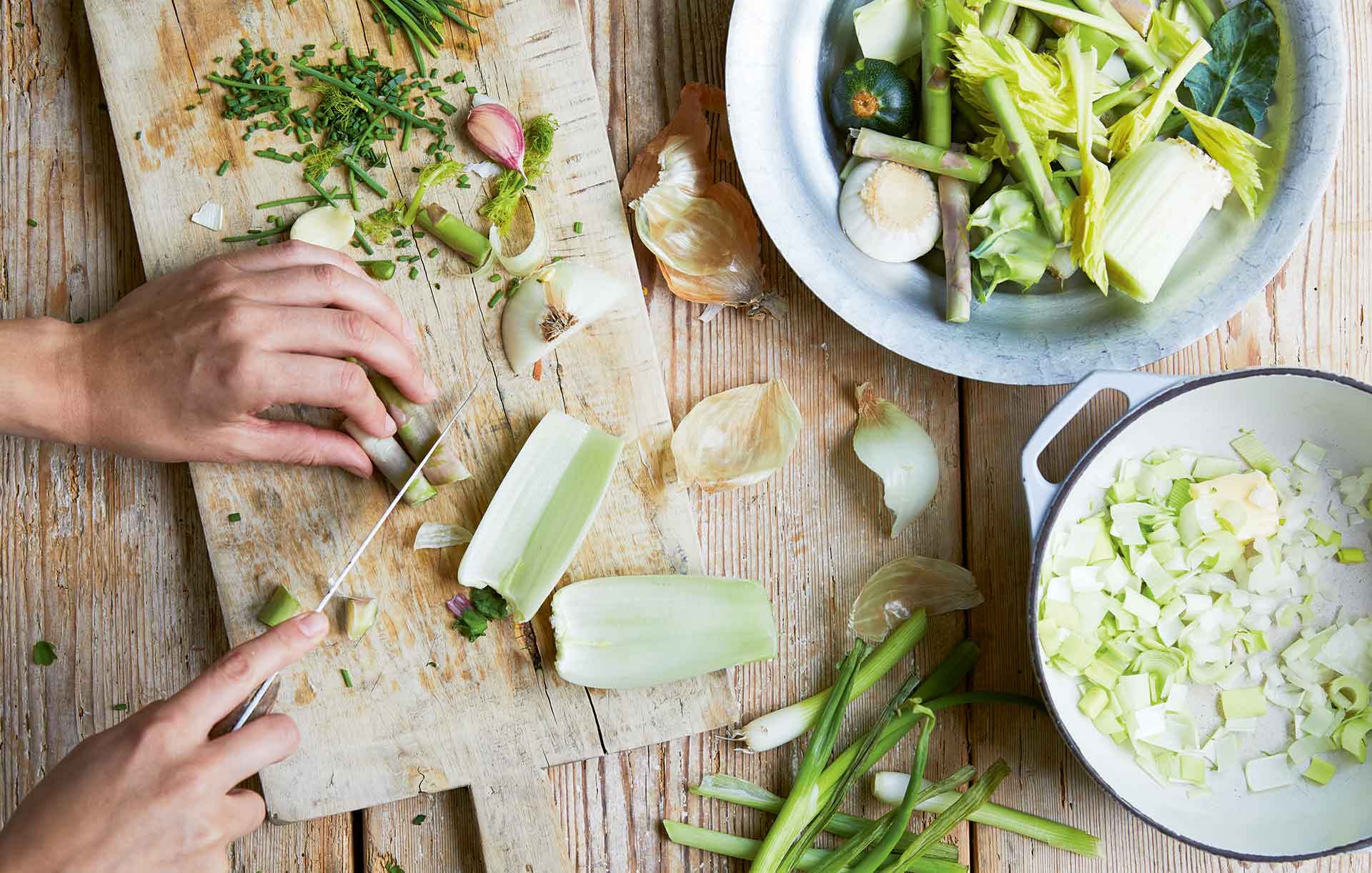Commentary
Cooking for the Climate

This is one in a continuing series of educational columns about fostering environmental stewardship and leadership coordinated by ACES — The Alliance of Climate and Environmental Stewards.
Judging by the number of cable TV shows, celebrity chefs, and new cookbooks coming out monthly, America is obsessed with cooking. It makes us feel good, creative, and connected to others. Finding ways to add a bit of environmental thinking into our cooking culture seems like it might be helpful to climate.
At first glance this may seem like a low priority approach for people concerned with the environment, but upon reflection it can be a positive approach to care for the planet, after all most of us eat multiple times per day. Let’s explore how our daily food choices impact climate and why. Then, hopefully, our cooking habits might evolve into more ‘climate conscious’ cooking’ activities.
To begin, let’s look at your choice of ingredients for your next food preparation activity. What might be the climate (carbon) footprint of your choices? Picking locally grown in-season produce is better for our climate than choosing out of season produce imported from distant states or countries. Produce from small local farms is much less likely to have the same negative impacts on health and climate as industrially grow, factory farm produce.
Produce grown in the drier regions of the southwest using scarce water resources and depleted soil is usually viewed as more damaging to the environment. The same may be true of raising meat, beef especially, that may be raised in South America where forests have been cleared to graze the cattle.
How can we change things for the better? First, we can choose low impact ingredients. Without going full on vegetarian, try leaning just a bit that way. Find and plan weekly plant-based meals using local seasonal produce. Or occasionally choose recipes with climate friendly swaps like replacing beef with lentils when possible.
Shop smarter by asking for exactly what your recipe calls for at the meat counter. Just press the ‘butcher button’ at the super market and ask for the weight you want. Don’t pick up the pre-packaged pork chops if its more than you really need. Buy peak of season produce locally. And maybe get together with a few friends to prep peaches, tomatoes, or corn for freezing or canning.
When there are leftovers, use them creatively. Some of the best old-fashioned recipes include Monday or Tuesday ‘hash’ made from left over roast combined with potatoes, onions, and peppers to make a wonderful dinner. Freeze left over veggies for later use in soups. Cut corn off the cob if one is left over. Bag it and freeze it for easy use in Shepards Pie.
Try to use energy efficient cooking methods as well. Use slow cookers, electric griddles, and air fryers. Electric cooking generally has lower greenhouse gas impacts than cooking with gas. And you don’t need to reheat every leftover either. Just thin slice and artfully arrange left over meats antipasto style on a platter with uncooked veggies, olives, and hummus along with fresh bread from a local bakery.
If you are ambitious, consider learning how to forage to add interest to your cooking. Dandelions, wild garlic, mushrooms, wild blueberries, and more can be interesting and a good excuse for an inexpensive walk in the woods with family or friends. In the mid-20th century, many Italian grandmothers “nonnas” foraged for a bit of wild garlic and mushrooms. Your Polish “babcia” dried foraged mushrooms and used them all winter for both protein and flavor. Lebanese and Greek grandmothers in the Merrimack Valley foraged wild grape leaves to make dolmas, stuffed rollups with rice, meat, and tomato sauce. They are excellent appetizers and side dishes.
“Cooking for climate” may sound like a corny catch phrase but it contains a lot of truth. Making it a lifestyle can make a difference. So, let’s start talking about it when we run into friends at the supermarket or farm stand. Start sharing climate friendly tips and recipes. Maybe host a neighborhood Fall gathering where the menus have been chosen with Cooking for Climate in mind.
Send ACES your favorite tips and recipes and let’s get this idea cookin’ in public consciousness. ACES team members believe everyone can make a BIG difference together. We invite you to stay updated on environmental matters by subscribing to our monthly newsletter via the “Subscribe to Updates” link on ACES’ website https://www.aces-alliance.org/. Please consider joining our community of stewards committed to Make Every Day Earth Day by contacting acesnewburyport@gmail.com and follow to our Instagram (@acesalliancenbpt) and Facebook (@ACESAlliance) pages to stay informed.
This educational column was originally published by The Daily News Of Newburyport on October 17, 2025.
.svg)






